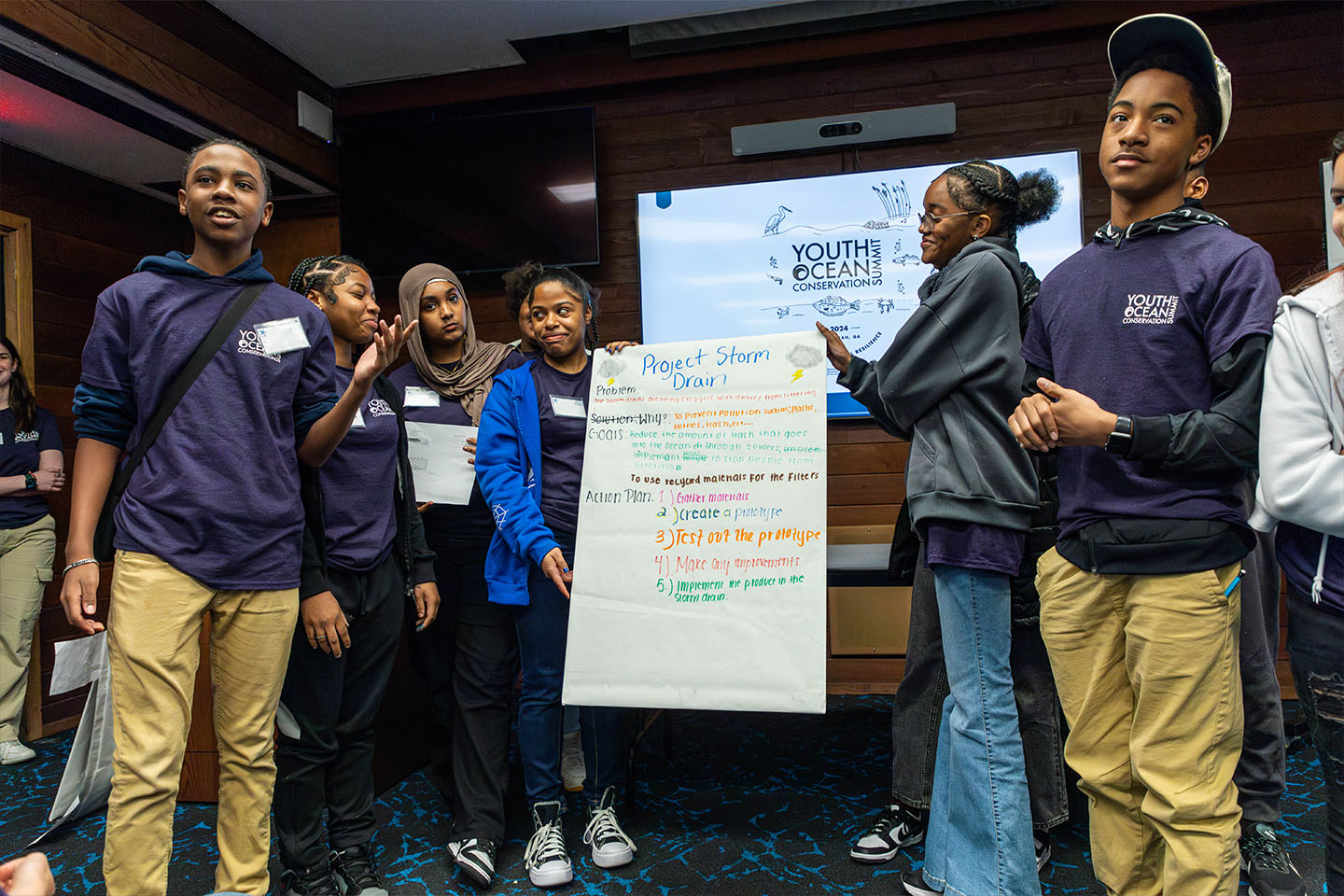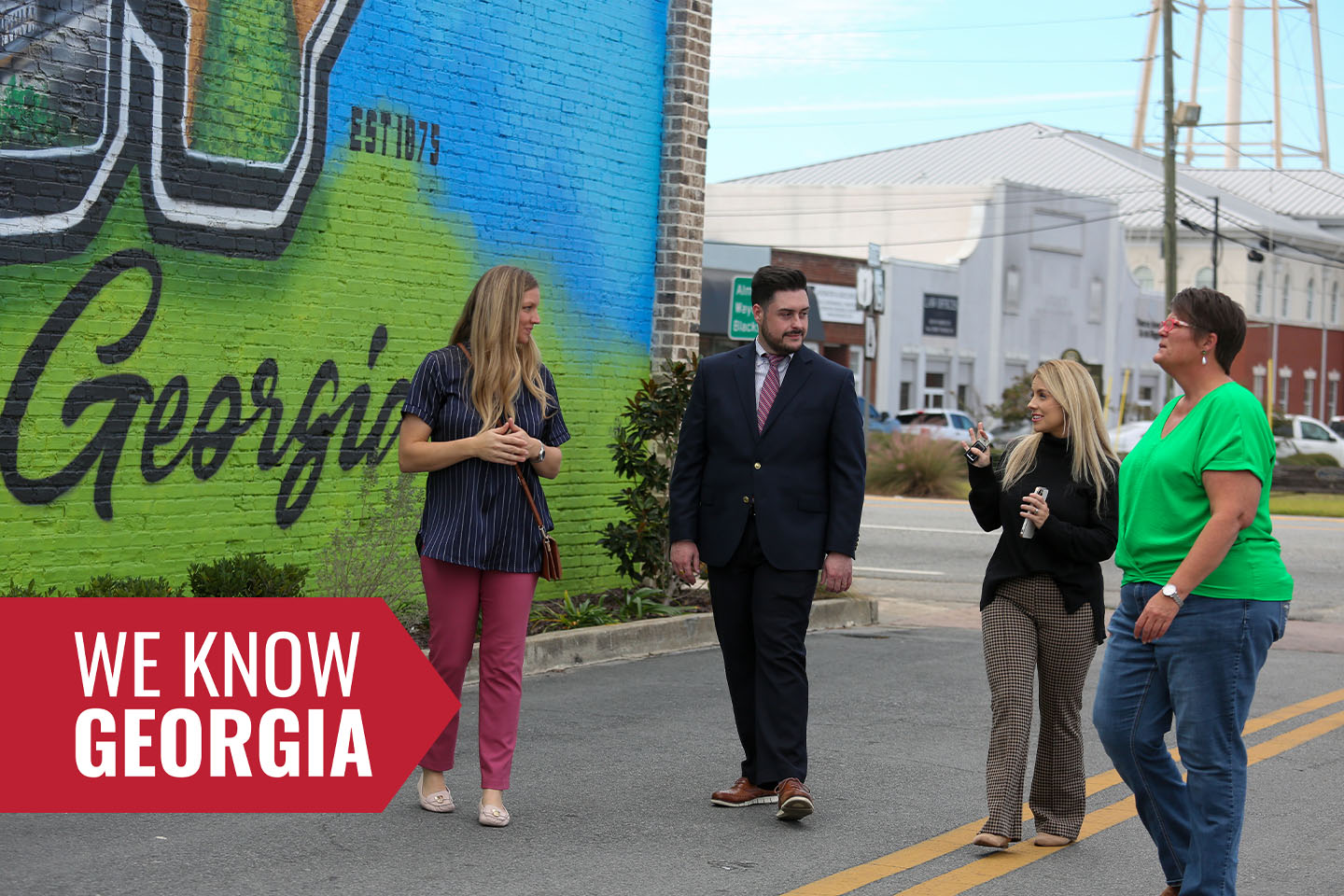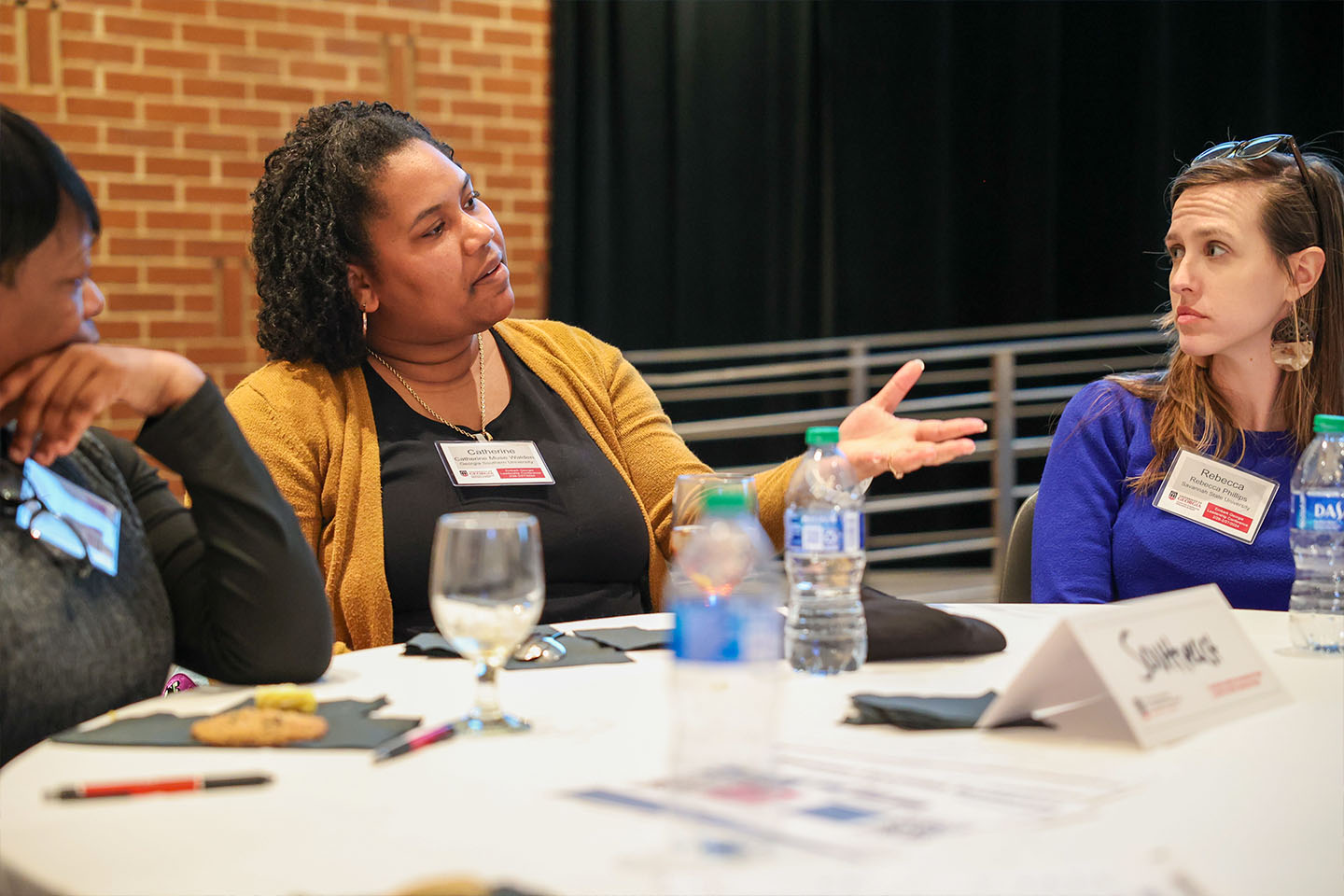The University of Georgia is helping communities reach teenagers in an innovative way.
The university’s Archway Partnership, a unit of Public Service and Outreach, coordinated the Hawkinsville Teen Maze last week, a series of scenarios that showed students the consequences of risky decisions.
“It showed real-life experiences,” said Hawkinsville High School sophomore Madison Head. “Stuff like this could really happen. Some people get emotional because it is so real.”
The day began with the aftermath of a simulated deadly wreck on the lawn in front of Hawkinsville High School (HHS) followed by a makeshift emergency room inside, where nurses frantically worked to save a dying teenager. Out in the courtyard was a jail reminding Head and her classmates of the consequences of drinking and driving.
Head was one of 600 teenagers and nearly 200 community volunteers that participated. It was the third time Hawkinsville High School has held a teen maze following events in 2012 and 2014. Each participant filled out a survey before and after, asking how likely they were to make some of the risky decisions portrayed.
“I have pages and pages of stories,” said Vonnie Berryhill, one of the event chairs and coordinator of Hawkinsville/Pulaski County Family Connection. “Some of them even recall the names of the volunteers. They talk about rehab and ER. There’s a coroner who talks about pulling girls (out of wrecks). You know it affected them because they remember the names (of presenters).”
The Teen Maze is the result of over a decade of UGA Public Service and Outreach initiatives. In 2003, the Carl Vinson Institute of Government conducted a study that found rural communities across the country needed help with unique community and economic development challenges. That led to a grant program through the Georgia Department of Community Affairs called Communities of Opportunity.
The J.W. Fanning Institute for Leadership Development worked on the Communities of Opportunity program, which launched in 2007. Grants were aimed toward addressing challenges identified in the community. While that program has expired, the Teen Maze continues to be coordinated through Archway Partnership.
The Teen Maze has been modeled elsewhere in the state, including in Washington County through Archway. Officials from Grady and Houston counties attended the 2016 edition with an eye toward bringing it to new areas.
The focal point of the Hawkinsville program has been combatting teen pregnancy. before being shown what happens in each trimester of pregnancy.
“I really think throughout rural Georgia this is a real challenge,” said Pulaski County Archway Professional Michelle Elliott. “Maybe in the past, methods we’ve used to reach teenagers have not been responded to as well as we have liked. It’s great sign that communities are looking at ways to reach teenagers.”
Each student left with a list of resources for dealing with issues like drug abuse, bullying, suicide and eating disorders. The goal is to make it to graduation. The maze ends with a mock ceremony where participants wear a real cap and gown.
“It is set up as a game, not a lecture or something boring,” Elliott said. “It’s a chance to see what could happen if they make a wrong choice. It is about making good personal choices about your body.”
The Teen Maze has drawn the attention of other Georgia counties, Elliott said. In addition to Washington, Grady and Houston, representatives from Treutlen, Montgomery, Wheeler, and Putnam counties have expressed interest in the program.




